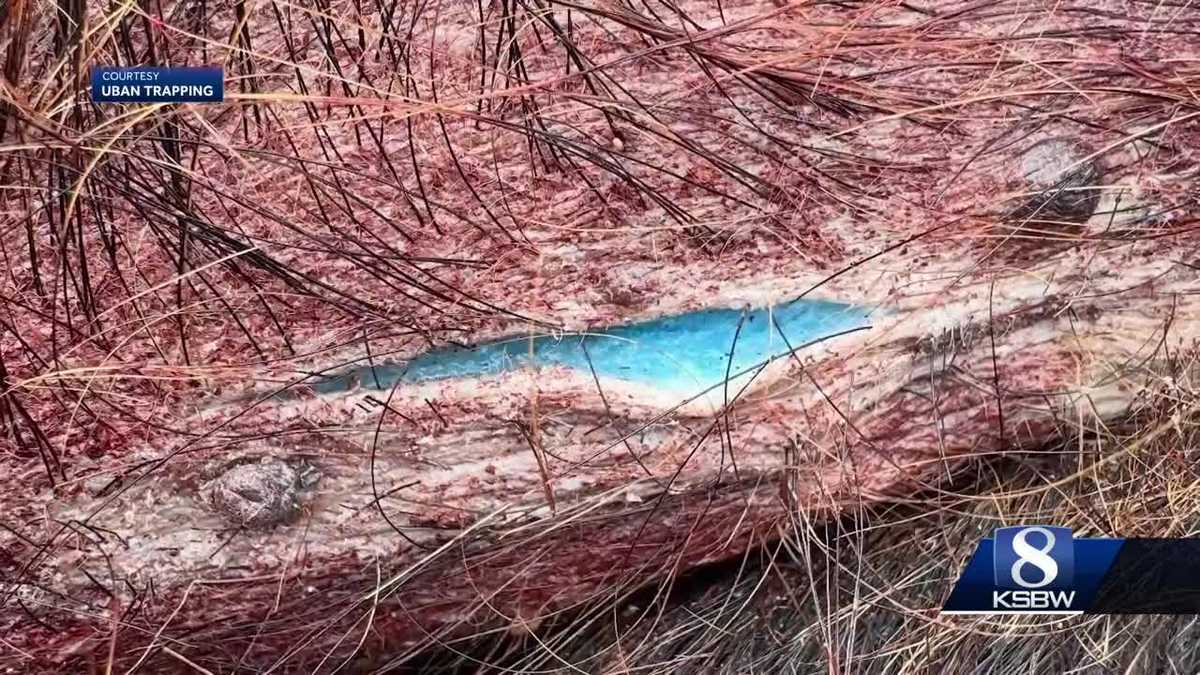Wild pigs in South Monterey County are showing signs of ingesting a poison meant for rodents, commonly found in bait stations located in agricultural fields.“I physically observed these pigs intentionally coming through fences and gates to search for this rodenticide. They weren’t going after anything else; they were specifically targeting ground squirrel bait stations, which I found very unusual,” said Dan Burton, the owner of Urban Trapping Wildlife Control.The rodenticide, known as diphacinone, is an anticoagulant used to prevent blood clotting in rodents.If an animal has ingested this rodenticide, it turns their fatty tissue blue.“That’s a clear signal to anyone who hunts and plans to eat an animal. If you cut it open and the tissue is blue, you don’t eat blue meat,” said Bryan Flores, Chief of Monterey County Parks.It’s not just one pig being affected, but many.“On one property, we checked 12 or 13 pigs, and they were all blue on the inside,” Burton said.The California Department of Fish and Wildlife confirmed the presence of the poison in one pig, which was sent to UC Davis for a toxicology panel.“That animal came back positive for diphacinone,” said Zach Mills, District Biologist for the California Department of Fish and Wildlife.Evidence suggests that pigs may be encountering diphacinone across multiple locations in South Monterey County and along the Salinas River.“We mapped out areas where we’ve observed affected animals, and the impacted region is quite large at this point,” Mills said. “I suspect these pigs are moving up and down the drainage system, encountering points of exposure to the rodenticide in multiple places.”Although the use of diphacinone has been banned in California, agricultural operations are an exception due to their need for effective pest control to protect crops.“It’s still permitted for agricultural and industrial use in some cases, but for the majority of the general public and government agencies, its use has been prohibited,” Flores explained.While diphacinone is not typically fatal for feral pigs, it can be lethal for other local wildlife.The pigs’ exposure raises concerns about the potential risk to other animal populations, either from eating the bait directly or consuming an animal that has ingested it.“Rodenticides are difficult to regulate within ecosystems; they move throughout the food web,” Mills said. “It can be fatal for many species, particularly non-target species. I’m especially concerned about birds.”The California Department of Fish and Wildlife is urging anyone using this poison to follow regulations carefully and use it responsibly.
Wild pigs in South Monterey County are showing signs of ingesting a poison meant for rodents, commonly found in bait stations located in agricultural fields.
“I physically observed these pigs intentionally coming through fences and gates to search for this rodenticide. They weren’t going after anything else; they were specifically targeting ground squirrel bait stations, which I found very unusual,” said Dan Burton, the owner of Urban Trapping Wildlife Control.
The rodenticide, known as diphacinone, is an anticoagulant used to prevent blood clotting in rodents.
If an animal has ingested this rodenticide, it turns their fatty tissue blue.
“That’s a clear signal to anyone who hunts and plans to eat an animal. If you cut it open and the tissue is blue, you don’t eat blue meat,” said Bryan Flores, Chief of Monterey County Parks.
It’s not just one pig being affected, but many.
“On one property, we checked 12 or 13 pigs, and they were all blue on the inside,” Burton said.
The California Department of Fish and Wildlife confirmed the presence of the poison in one pig, which was sent to UC Davis for a toxicology panel.
“That animal came back positive for diphacinone,” said Zach Mills, District Biologist for the California Department of Fish and Wildlife.
Evidence suggests that pigs may be encountering diphacinone across multiple locations in South Monterey County and along the Salinas River.
“We mapped out areas where we’ve observed affected animals, and the impacted region is quite large at this point,” Mills said. “I suspect these pigs are moving up and down the drainage system, encountering points of exposure to the rodenticide in multiple places.”
Although the use of diphacinone has been banned in California, agricultural operations are an exception due to their need for effective pest control to protect crops.
“It’s still permitted for agricultural and industrial use in some cases, but for the majority of the general public and government agencies, its use has been prohibited,” Flores explained.
While diphacinone is not typically fatal for feral pigs, it can be lethal for other local wildlife.
The pigs’ exposure raises concerns about the potential risk to other animal populations, either from eating the bait directly or consuming an animal that has ingested it.
“Rodenticides are difficult to regulate within ecosystems; they move throughout the food web,” Mills said. “It can be fatal for many species, particularly non-target species. I’m especially concerned about birds.”
The California Department of Fish and Wildlife is urging anyone using this poison to follow regulations carefully and use it responsibly.

